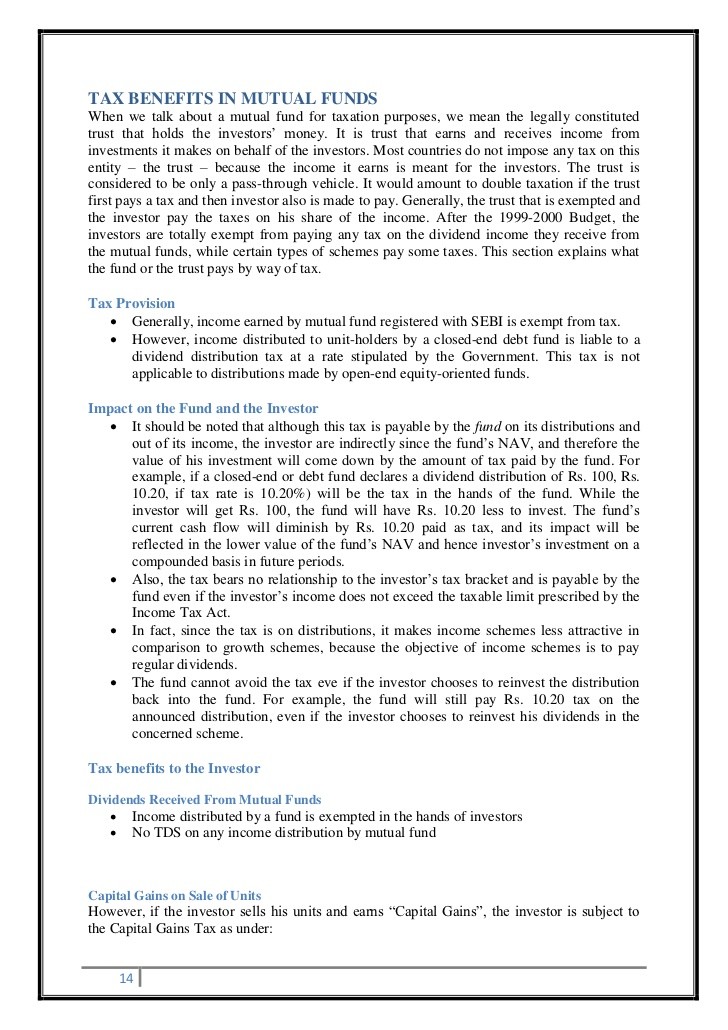After Poor Performance Now a Mutual Fund Tax Hit
Post on: 19 Июнь, 2015 No Comment

2014 saw several major market indices reach all-time highs, fueled by the Fed’s rampant printing of money that will likely be curtailed by the republican House of Representatives that was voted in back in November. However, the average stock mutual fund did not see similar gains last year, a fact that may not have come to the attention of many mutual fund investors. But those who did not notice this detail will have a much harder time missing the substantial tax distributions that will be appearing on their 1099 forms this spring.
Adding Insult to Injury
Although 2014 saw historic highs in the market, it also produced a historic discrepancy between the performance of stock mutual funds and their underlying benchmark indices. Morningstar found that about four out of every five stock mutual funds lagged their benchmarks last year, compared to an average of three out of every five funds on average over the last 25 years. One possible reason for this variance is the abnormally large number of shareholders who liquidated fund shares in 2014 after seeing several years of substantial growth following the 2008 bear market. Many experts are predicting a major market correction in the near future, and fund holders who survived the last bear market may therefore be deciding that this is a good time to get out. (For related reading, see: Mutual Fund Ratings: Crucial or Insignificant? )
However, this run on funds has forced many managers to liquidate highly appreciated fund holdings in order to accommodate these sales, and this has of course resulted in sizeable taxable gains in many cases. Mark Wilson, the chief investment officer for an advisory group in California, runs a website that tracks capital gains distributions from actively managed funds. His site estimates that over 500 funds had capital gains distributions of over 10% last year and over 60 of them have distributed at least a whopping 20% of their holdings as gains. Another reason that these gains have hit so hard in 2014 is because portfolio managers no longer have losses left over from the Subprime Meltdown in 2008 to net out against realized gains inside their portfolios. The selloff in the fund market has ultimately resulted in a nasty double-whammy for mutual fund investors who held shares in 2014. (For related reading, see: Active Investment Management Misses the Mark .)
Loading the player.
What You Can Do
Advisors who seek to minimize their clients’ taxes can use this unpleasant dilemma to show their value to clients. Those who received ugly surprises on their 1099s from last year may be good candidates to move into more passively managed instruments such as index funds or actively managed funds that emphasize tax efficiency. The gains that are distributed from mutual funds can of course also be canceled out with losses generated from other sales, so if you anticipate that your client may have more distributions coming from their funds this year, then they could offset this by selling one or more losing holdings to realize some corresponding losses. If the fund price declines during the year, then selling some shares of the fund itself may be the most sensible option as long as the wash sale rules are followed-or another fund is purchased instead. Moving fund shares into an IRA is another possibility, as long as the client won’t have to pay a sales charge to sell shares and then buy them back inside the retirement account. Clients who have large balances invested in taxable funds who want to avoid receiving 1099s may also be good candidates for indexed or variable annuity contracts. (For related reading, see: Pros and Cons of Annual Tax-Loss Harvesting .)
Another key factor to remember is that all mutual fund investors who own shares on the annual date of declared fund distributions will owe tax on the entire year’s gains, regardless of when the shares were purchased during the year. It’s vitally important that you keep track of when this date is for any fund purchase that you recommend so that you do not create a tax liability for your clients on capital gains that were realized before they ever bought in. (For more, see: Financial Advisor Client Guide: Deductions, Credits and Filing Status .)

Disclosure Update
The Securities and Exchange Commission now requires fund companies to include a breakdown of after-tax returns for their funds, which shows the effect of income taxes on retail accounts. But advisors need to understand that these numbers will not always be accurate, because the rule requires funds to show the client’s tax bill if they liquidate after holding shares for a year, and the fund will probably not actually liquidate securities in this manner in many cases. Advisors who offer comprehensive planning services are probably better off to plug the client’s information into a program that can show a much more individualized-and accurate-picture of the tax consequences of a sale. (For more, see: 5 Services to Usher in New Clients .)
The Bottom Line
Clients who have received substantial tax bills to go with mediocre fund performance will not likely be happy customers. Anything you can do to help them mitigate this factor in 2015 can help you to maintain your client base and add value to your practice. For more information and statistics on mutual fund capital gains, visit Morningstar’s website at www.morningstar.com or www.capitalgainsvalet.com. (For related reading, see: Cut Your Tax Bill with Donor-Advised Funds .)














